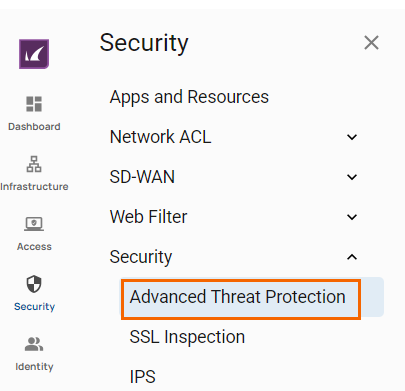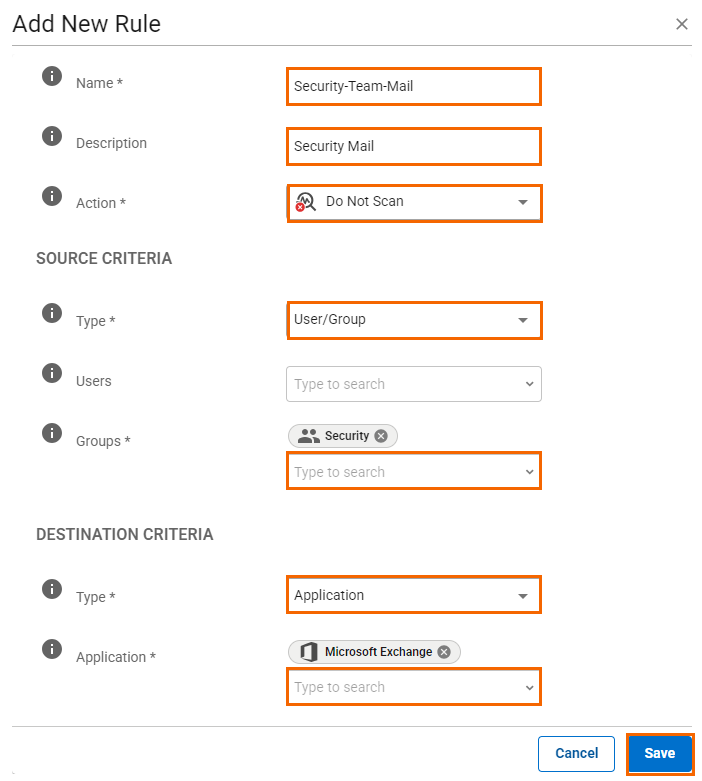Advanced Threat Protection (ATP) offers protection against advanced malware, zero-day exploits, and targeted attacks not detected by the intrusion prevention system by scanning downloaded files. The user receives the downloaded file immediately after the hash DB lookup, which compares a hash of the file with the Barracuda database to see if it is a malicious file. Simultaneously, the file is uploaded to the Barracuda ATP cloud, but only if the file is 10 megabytes or less. Archives are unpacked and the files they contain are sent to the ATP cloud with the same restriction that only unpacked files 10 megabytes or less are sent to the ATP cloud for inspection. In the ATP cloud, those files are emulated in a virtual sandbox and their behaviour is analyzed. Depending on the behaviour of the file, it is assigned a threat level that is transmitted to the appliance. If the threat level exceeds the ATP threat level threshold, the file is blocked; otherwise, it is delivered.

Advanced Threat Protection can be used for HTTP, HTTPS, FTP, and FTPS traffic. For HTTPS and FTPS, SSL Inspection must be activated.
The following file types are scanned by the Barracuda ATP cloud:
Microsoft Office files – doc, docx, ppt, pps, pptx, ppsx, xls, xlsx
OpenOffice – rtf, open office document extensions
Microsoft executables – exe, msi, class, wsf
macOS executables
PDF documents – pdf
Android APK files – apk
ZIP Archives – 7z, lzh, bz, bz2, chm, cab, zip
RAR Archives – rar4 and rar5
TAR Archives – tar
GZ Content – Content compressed with gzip
Risk Scores
The ATP service classifies all files in one of four categories:
High – Files classified as high risk exhibit behavior normally only found in malware.
Medium – Files classified as medium risk pose a potential risk.
Low – Files classified as low risk are considered to be harmless. Some residual risk remains.
None – No suspicious activity was detected.
Reporting
SecureEdge Reporting allows you to collect data for reports for your connected Sites when Web Filtering is enabled. The Reporting data is streamed according to your selected region. For more information on logs and reporting, see SecureEdge Reporting.
In addition, you can create reports and notifications using an Azure Log Analytics workspace. Your Barracuda SecureEdge service must be connected to the Azure Log Analytics workspace via the Azure Log Analytics Daemon.
For more Information, see:
How to Configure Log Streaming to Microsoft Azure Log Analytics Workspace.
How to Configure Log Streaming via the Azure Log Analytics Daemon in SecureEdge.
Maximum Number of Scans
Scale Units Gateway | Maximum Scans per Minute | Maximum Scans per Month |
|---|---|---|
2 | 100 | 2 000 000 |
4 | 100 | 2 000 000 |
10 | 100 | 2 000 000 |
14 | 100 | 2 000 000 |
20 | 100 | 2 000 000 |
30 | 150 | 3 000 000 |
40 | 150 | 3 000 000 |
60 | 200 | 4 000 000 |
80 | 250 | 5 000 000 |
Before You Begin
If you want to use the users or groups from user directories (such as Microsoft Entra ID, LDAP, Google Workspace, Okta, SCIM, and Barracuda Cloud Control) in network policies, you must first connect your SecureEdge Identity Management in order to synchronize users and groups. For more information, see Identity Management.
If you want to select users or groups from user directories such as BCC-linked Microsoft Entra ID or the BCC-linked LDAP directory in the policies, you must first connect your directory with Barracuda Cloud Control in order to synchronize users and groups. For more information, see LDAP Active Directory and Microsoft Entra ID and How to Connect Microsoft Entra ID with Barracuda Cloud Control.
Enable SSL Inspection.
Create Advanced Threat Protection Rules
Go to https://se.barracudanetworks.com and log in with your existing Barracuda Cloud Control account.
Go to Security.
Expand the Security menu on the left and select Advanced Threat Protection.

The Advanced Threat Protection window opens. To create a new rule, click Add Rule.

The Add New Rule window opens. Specify values for the following:
Name – Enter a name for the rule.
Description – Enter a brief description for the rule.
Action – Select an action. You can choose either Scan or Do not Scan.
In the SOURCE CRITERIA section, specify values for the following:
Type – Select a source type. You can choose between IP/Network, Site, and User/Group.
If you select Site, the All Sites option is enabled by default. However, you can add a specific Site after disabling All Sites.
If you select IP/Network, specify values for the following:
IP/Network – Enter an IP or network address.
If you select User/Group, you must add one or more users/groups from the drop-down menu, or type to search.
In the DESTINATION CRITERIA section, specify values for the following:
Type – Select a destination type. You can choose between Application, Domain, IP/Network, and Site.
Application – Select an application. For more information, see How to Create Custom Applications.

Click Save.
Edit an Existing Rule
In the left menu, click Security.
Expand the Security menu on the left and select Advanced Threat Protection.
The Advanced Threat Protection window opens. Click on the pencil icon next to the rule you want to edit.

The Edit Rule window opens. Edit the value you are interested in.
Click Save.
Remove an Existing Rule
In the left menu, click Security.
Expand the Security menu on the left and select Advanced Threat Protection.
The Advanced Threat Protection window opens. Click on the trash can icon next to the rule you want to remove.

The Delete Rule window opens.

Click OK to confirm.
Select the Default Action
You can configure Advanced Threat Protection to either scan or not scan by default.
Go to https://se.barracudanetworks.com and log in with your existing Barracuda Cloud Control account.
Go to Security.
Expand the Security menu on the left and select Advanced Threat Protection.
The Advanced Threat Protection page opens. Select the Default Action. You can choose either Scan or Do not Scan.

Further Information
For more information on User and Groups, see How to Connect Microsoft Entra ID with Barracuda Cloud Control.
